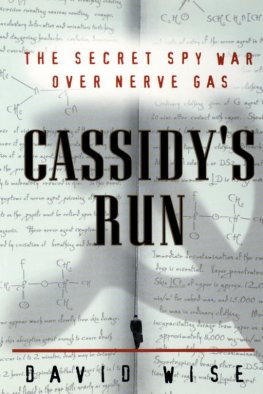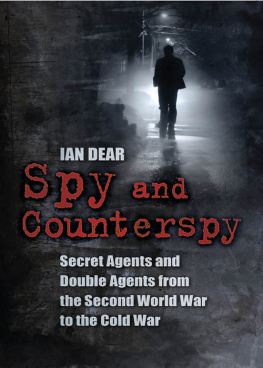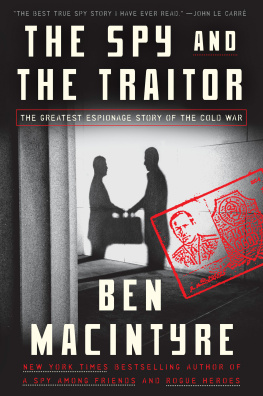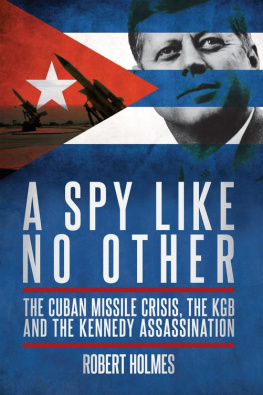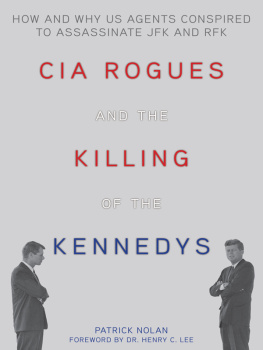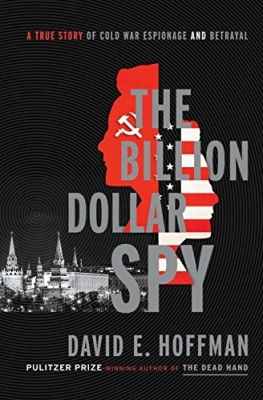The CIAs
Russians


The latest edition of this work has been brought to publication with the generous assistance of Marguerite and Gerry Lenfest.
Naval Institute Press
291 Wood Road
Annapolis, MD 21402
2003 by John Limond Hart
All rights reserved. No part of this book may be reproduced or utilized in any form or by any means, electronic or mechanical, including photocopying and recording, or by any information storage and retrieval system, without permission in writing from the publisher.
First Naval Institute Press paperback edition published 2014
ISBN 978-1-61251-324-9 (eBook)
The Library of Congress has cataloged the hardcover edition as follows:
Hart, John Limond, 1920
The CIAs Russians / John Limond Hart.
p. cm.
Includes bibliographical references and index.
1. United States Central Intelligence AgencyBiography. 2. DefectorsSoviet UnionBiography. 3. SpiesSoviet UnionBiography. 4. Espionage, AmericanSoviet Union. I. Title.
JK468.I6H375 2003
327.12730470922dc21
2002156366

 Print editions meet the requirements of ANSI/NISO z39.48-1992 (Permanence of Paper).
Print editions meet the requirements of ANSI/NISO z39.48-1992 (Permanence of Paper).
9 8 7 6 5 4 3 2 1
To my wife, Katharine, my two daughters, Lisa Hamilton and Cathy Michaels, and my seven grandchildren
Contents
Spies have fascinated novelists, journalists, and historiansand the reading publicfor centuries. Using overtones of tragedy and heroics, and sometimes sordid cynicism, authors have tried to portray the successes, adventures, and human disasters associated with the ancient profession of espionage, while often indiscriminately blending fact and fiction. Unfortunately most books on this subject have been produced by people outside the intelligence profession, many of whom have drawn upon their imaginations to portray the pressures, temptations, and thrills of leading lives devoted to this frequently dangerous profession.
John Hart brings a new approach to the age-old search for understanding this subjectthe professional intelligence operator who also is a scholar. Harts rendering is no outsiders fantasy of what the life of a spy must be like; his depiction comes from many years of involvement in the recruitment, management, and sometimes even psychological counseling of real spies. After World War II Hart spent nearly twenty-five years directing CIA intelligence operations as chief in Korea, Thailand, Morocco, and Vietnam; managing agency operations against Albania, China, and Cuba; and for four years running all CIA operations in Western Europe. He has known firsthand the difficulties of penetrating Communist regimes counterespionage defenses, and personally experienced the agony of betrayal by Soviet agents such as Kim Philby, the renegade Englishman who for many years masqueraded as a patriotic British intelligence officer.
I knew John as more than the prototype of the tough field operator. He also was a thoughtful student of espionage as a profession. In 1971, nearing the end of his active duty career with the CIA, he asked the then-director of Central Intelligence, Richard Helms, to allow him a year to study the personalities and circumstances that had led a number of Soviet citizens to spy on behalf of the United States. During that year John reviewed the details of a number of CIA-run espionage cases, each of whose massive files filled many four-drawer safes. These operational records were more than impersonal chronological documentation; they were deeply human accounts of the thoughts and emotions of men who had taken the risk of spying on behalf of the United States, all too often costing them their lives. John thus made an effort to grasp the human factors that had led to their commitment as spies, as well as to identify the qualities and vulnerabilities that might enable U.S. intelligence agencies to identify and work with others like them in the future. Intrigued by these unusual men, John took a master of arts degree in psychology in an effort to better comprehend the human relationship that must be forged between the spy and his foreign contact.
The result is a highly professional analysis of a relationship that has been left too long to novelists and sensational journalists. In this account John has distinguished the person who merely flees the oppressive atmosphere of his homeland from the oppositethe heroic, sometimes reckless individual who remains within the target country in order better to warn us of dangers facing our nation. He also examines the influence of the political atmosphere that, before the collapse of the Soviet Union, pervaded and still pervades its elite; he makes clear that it was not necessarily the proletariats of Russian society who spied against their homeland, but many who had successfully risen in the elite social structure. It is a permissible hypothesis that those of the latter category were in fact the forerunners of the much larger segments of society that have since risen to throw off Soviet dictatorship and take their place among the comity of free nations.
Looking ahead John recognized the development of improved relationships between the United States and the countries of the former Soviet Union and examined the question of the need for espionage in the area where it once flourished most actively.
William E. Colby
Former Director of Central Intelligence
Toward the end of 1971, after a quarter-century career in the Operations Directorate of the Central Intelligence Agency (CIA), including several overseas assignments as chief of station and a headquarters position as an area division chief, I made my way to the office of Richard Helms, at the time the director of Central Intelligence, to ask for an unusual assignment of my own devising. It seemed to me that none of us knew exactly why a very small minority of Soviet officials chose to work clandestinely for, or defect to, the West. Should we not make a more systematic effort to understand what led some to collaborate while others refused to consider any such act? Agents-in-place were, after all, the lifeblood of our then-highest-priority intelligence-collection program targeted at the Soviet Union, and we needed a better understanding of them.
I proposed to spend a year researching in depth a representative group of Soviet espionage cases handled by the agency. This research should be conducted, I suggested, in consultation with members of the agencys excellent psychological and psychiatric staffs in the hope of discovering some of the secrets and possible common denominators behind the willingness of certain Soviets to spy on our behalf, whereas most were not so inclined. Helms agreed to my proposal.
Later, after several years of contented retirement in my quiet home outside Washington, D.C., I was asked to abandon my retreat and return to duty for a few months. I was told that the agency needed someone to assess the complex and unpleasant case of a Soviet citizen, Yuri Nosenko, who had been held in solitary confinement in the United States for a prolonged period. It was thought that I might possess the necessary background, detachment, and objectivity to unravel the truth as to why a normally decent U.S. government organization had held him for three years under the most debasing of circumstances. I seemed to be the obvious candidate in light of having undertaken my earlier research.
Next page

